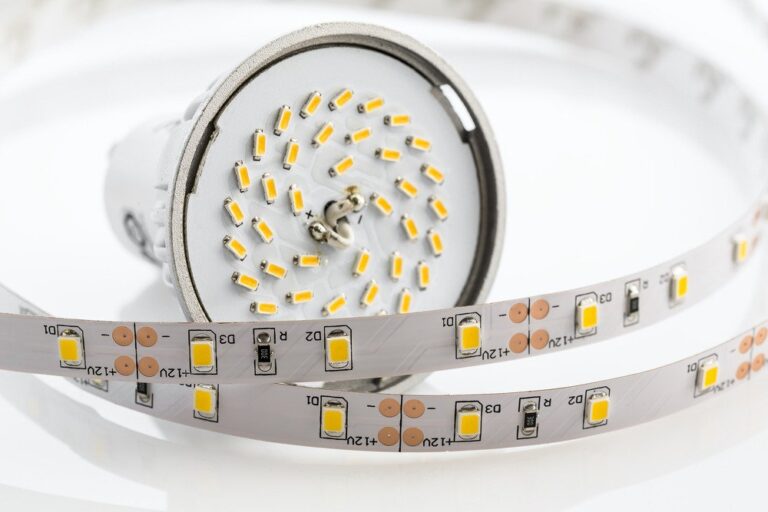When flicking the switch or tapping a button on your battery-operated light, the last thought that crosses your mind is likely not about fire hazards. Yet, this trivial action might incite curiosity regarding the safety of these seemingly innocuous gadgets. Battery-operated lights, prevalent in households, campsites, and emergency kits, have become an indispensable aspect of modern living. But can they catch fire? Let’s delve deeper into the intriguing world of battery-operated lights and their potential fire safety risks.
First and foremost, it’s imperative to understand the components that constitute these battery-operated lights. Typically, they include light-emitting diodes (LEDs), a housing unit, and various batteries, which can be alkaline, lithium-ion, or nickel-metal hydride. Each of these components possesses distinct attributes that impact the overall safety profile of the device. Indeed, the configuration of these materials lays the groundwork for understanding fire hazards.
One might wonder, do LEDs contribute to the fire risk? Traditionally, LEDs are often touted for their energy efficiency and durability. They emit minimal heat compared to incandescent bulbs, which can reach exceedingly high temperatures and pose a significant fire risk. However, it is vital to differentiate between the LED itself and its surrounding elements. The housing unit, often made of plastic, can indeed be susceptible to heat, especially if the device malfunctions or is improperly designed.
Battery types also come into play when considering potential fire hazards. Lithium-ion batteries, widely used due to their lightweight and efficient energy density, can be particularly problematic under certain circumstances. If they are overcharged, punctured, or exposed to extreme temperatures, these batteries can experience thermal runaway, ultimately resulting in combustion. Alkaline batteries, while less susceptible to such dramatic failures, can still leak corrosive materials if mishandled. Thus, understanding the specific type of battery utilized in your portable light is crucial in assessing potential fire risks.
The installation and usage of battery-operated lights are equally critical in fire safety considerations. Following manufacturer guidelines is paramount. Inappropriate usage, such as covering lights or placing them near flammable materials, could obstruct heat dissipation and create hazardous conditions. Always inspect your modular lights and ensure they are adequately ventilated to mitigate any risk factors.
Another common concern revolves around the age and condition of your lighting device. Even the most reliable battery-operated lights have a lifespan. As these devices age, components can deteriorate. Insulation may break down, or wiring could fray, both of which could culminate in unexpected electrical shorts. Regular inspections and maintenance are essential to ensure optimum safety. If you notice any visible damage, it is prudent to replace the unit immediately rather than risk potential fire hazards.
For those intrigued by the sheer ease and convenience of battery-operated lights, a need for vigilance persists. Environments with increased flammability, like garages filled with flammable substances or storage areas packed with supplies, require particular attention. Ensuring that these lights are compliant with safety standards can be the difference between a harmless glow and an unexpected cause for concern.
Furthermore, consider the choice of lighting. Opting for battery-operated lights that have undergone rigorous safety testing can provide added peace of mind. Many reputable companies adhere to stringent safety protocols, but not all products are created equal. Before finalizing a purchase, scrutinizing safety certifications can safeguard against potential hazards.
Adopting preventative measures can significantly assuage fire risks associated with battery-operated lighting. Storing spare batteries in cool, dry places is a proactive step. Avoid displaying them in direct sunlight or in locations that experience extreme temperature fluctuations. Additionally, avoid purchasing off-brand batteries or lights that do not adhere to established safety standards, as these can compromise integrity and increase the chance of malfunction.
Another intriguing aspect worth mentioning is the impact of technology innovations on fire safety. Contemporary battery-operated lights may integrate smart technology, enabling features such as temperature regulation and diagnostics. These advancements can alert you to potential issues before they escalate into more serious fire risks. Monitoring the battery condition via a mobile app can be an invaluable tool in avoiding mishaps.
However, the inquisitive mind cannot help but ponder the broader implications of such technology. As society embraces convenience, there lies a dual responsibility; we must not only relish the luxuries that battery-operated lights provide but also remain vigilant guardians of safety. The enthrallment surrounding these devices richly layers our fascination with energy efficiency and modern convenience, yet it beckons us to engage in informed and safe practices.
Ultimately, while battery-operated lights represent a beacon of utility and ingenuity, awareness of their fire safety risks must accompany their usage. Understanding the potential hazards associated with their components, diligent maintenance, and strict adherence to safe usage practices can drastically reduce the chances of fire incidents occurring. This awareness transforms our relationship with our gadgets from mere reliance to responsible stewardship of safety. So the next time you switch on that handy battery-operated light, remember that while it may illuminate your space, vigilance must remain a steadfast companion in your journey towards ensuring fire safety.
